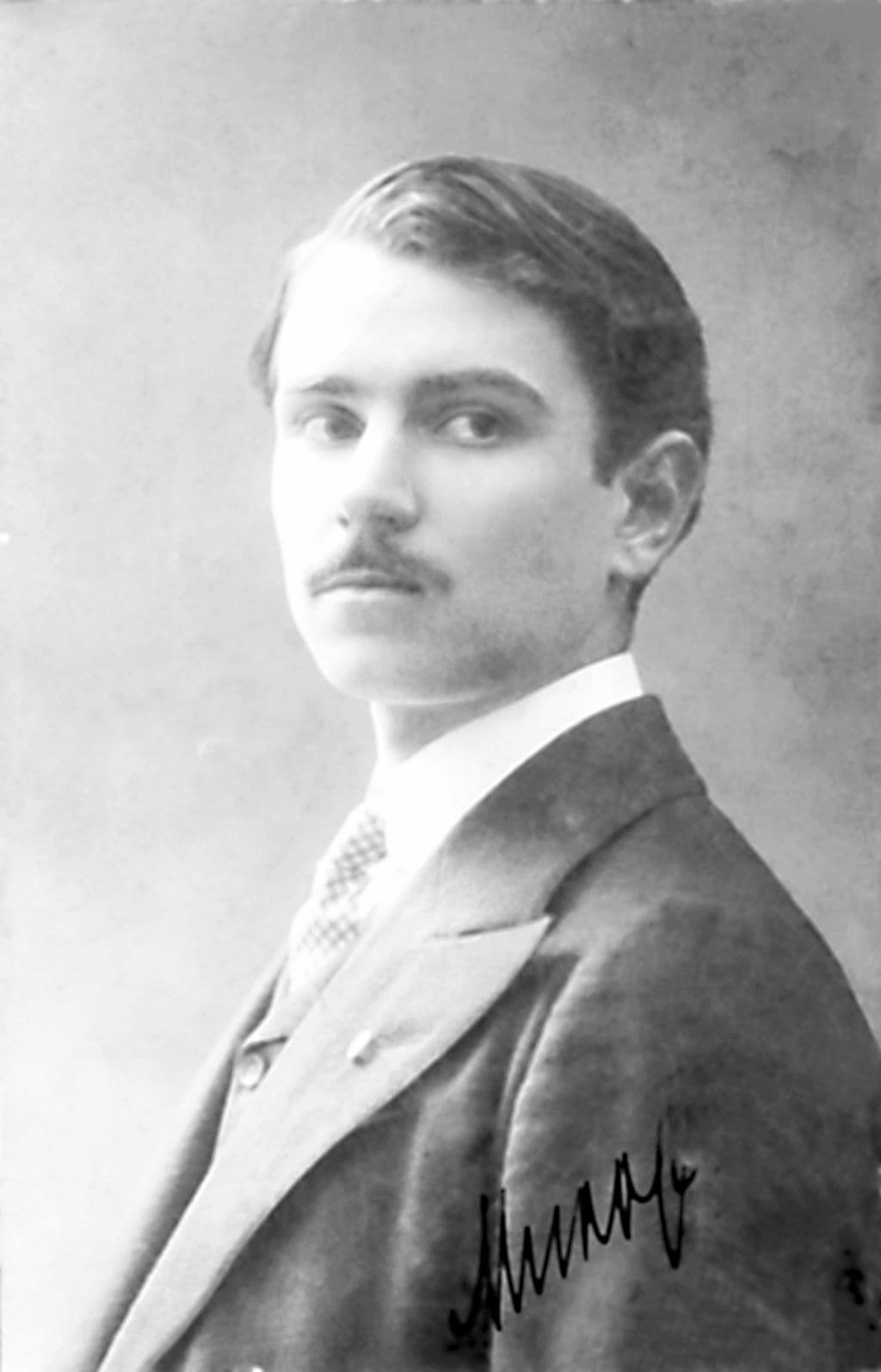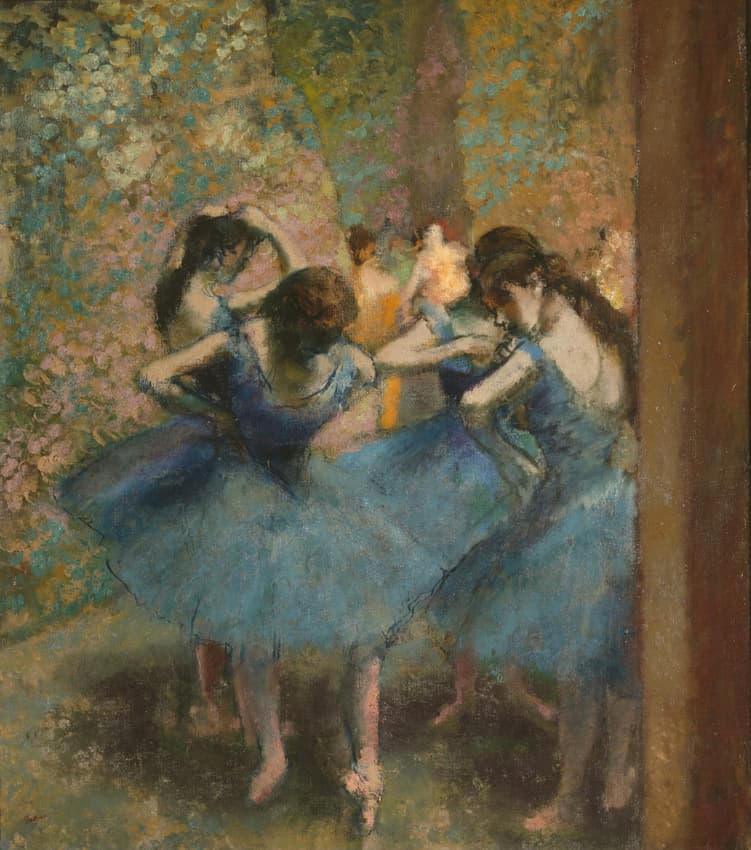Miloje Milojevic: Kameje (Cameos)
Serbian composer Miloje Milojević (1884–1946), as one of the most significant Serbian composers of piano music, his contributions have pushed Serbian music to a new high. One of his most successful collections was Cameos: Impressions for Piano, written between 1937 and 1942.

Miloje Milojević as a student in Munich, around 1908
In Kameje (Cameos), he creates a mixture of piano miniatures based on known works by art of Degas, Boucher, Rodin, and others, and settings, such as a tomb at the Père-Lachaise cemetery in Paris or the Cologne Cathedral.
The first movement is based on Degas’ Danseuses bleues, painted on stage but not on centre stage. We’re behind the scenes, as many of Degas’ paintings are situated. At the front, four dancers in blue toile adjust their costumes, warm up their foot work, and adjust their hair, waiting for their moment in the limelight. Two of them stand, turned out, feet carefully placed in second position while their attention is elsewhere. Behind them, dancers in yellow and gold, one with red hair, are waiting as well. The background scenery looks like an impressionist forest – trees and pink and white flowers against a turquoise background.

Edgar Degas: Danseuses bleues, ca. 1890 (Paris: Musée d’Orsay)
In the music, Milojević reflects the waiting nature of the image. One melody doesn’t predominate, and the focus seems to shift from dancer to dancer, light and temporary. When a melody does pop out, sounding rather like a sped-up Dies Irae, you can imagine that it’s for a dancer trying a specific step, like the one in the foreground.
Miloje Milojevic: Kameje (Cameos): I. Les Danseuses en blue (Die Tanzerinnen in Blau) (nach dem Gemälde von Degas): Andante grazioso (Tijana Andrejic, piano)

Edgar Degas: Self Portrait
Just as Degas’ painting is an impression of the things dancers do while they wait around, Milojević’s piece is an impression of that impression set to music. The randomness of the musical line and the patience of waiting for a melody match Degas’ dancers’ feelings as they wait to go on to perform. Things catch their interest, to be forgotten a second later as the performance time approaches; they try out a foot movement; they adjust something that’s not working, be it their hair or their costume; and then suddenly, all of that is set aside. Just as abruptly, the music ends.
For more of the best in classical music, sign up for our E-Newsletter
